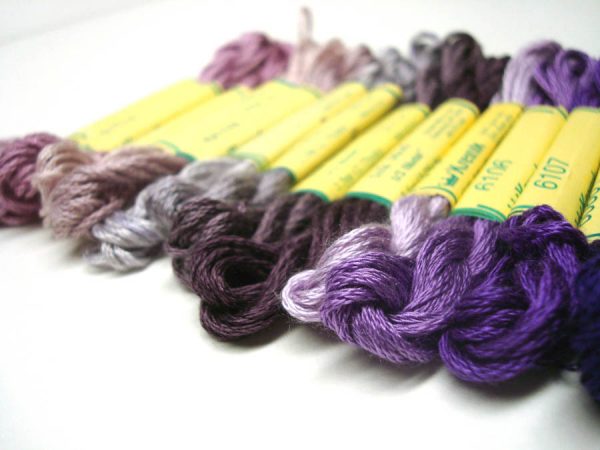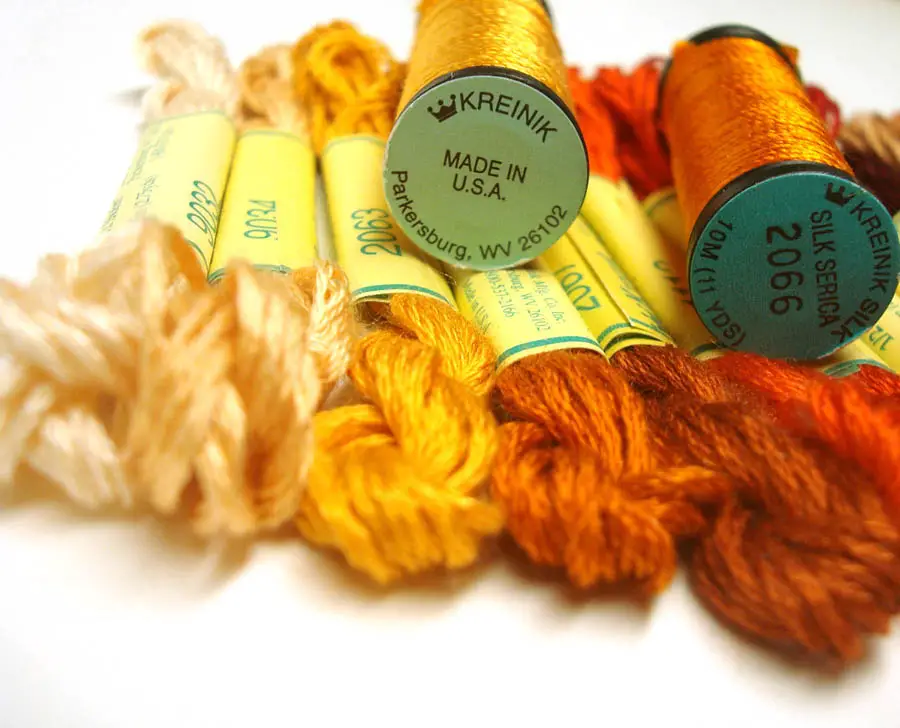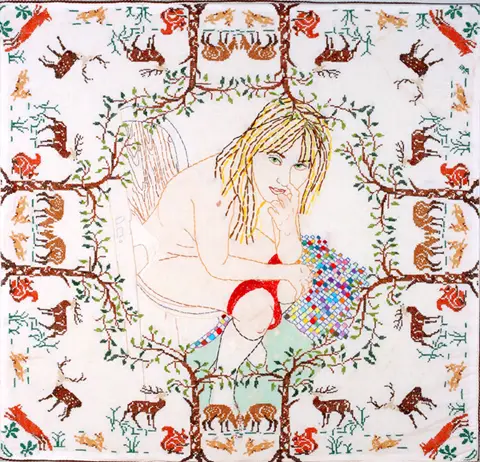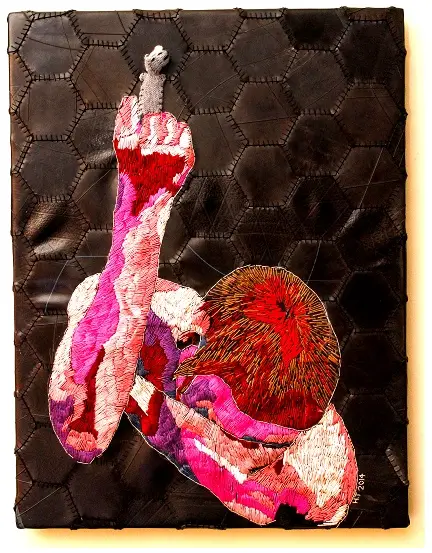
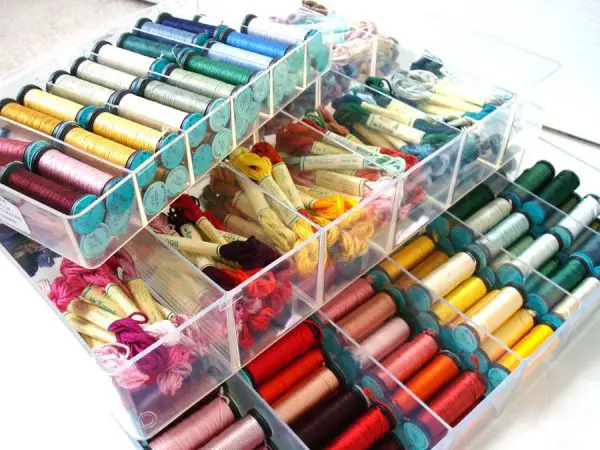
There are times when using silk thread is absolutely worth it; just as quilters know to use the best quality fabrics for a lasting quilt, better quality threads will raise the bar on your needlework. Silk embroidery floss can be used just as you would use cotton embroidery floss: use two strands on 14-count Aida or over two threads on 28-count linens.
There are many creative reasons to use silk thread in your embroidery and here are three common ones to get you thinking:
- For Stitching Historical Reproductions
- For Highlighting Stitch And Texture
- For Creating Lasting Family Heirlooms
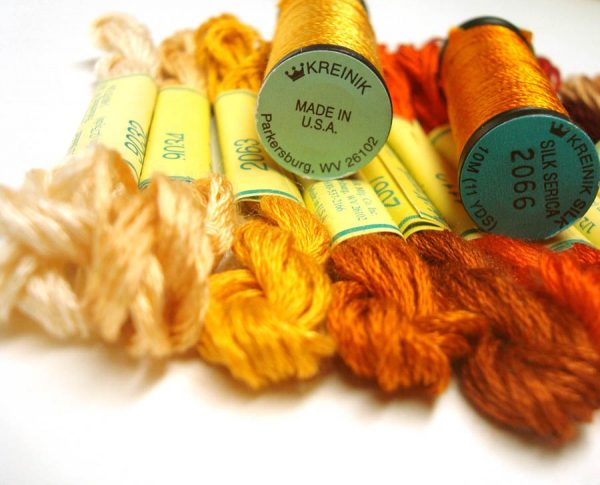
Historical Reproduction
Silk was traditionally used in samplers, blackwork, ecclesiastical embroidery, Chinese and Japanese embroidery; imagine the silk embroidered hand bags, evening gowns, even gentlemen’s waistcoats of Jane Austen’s time.
Go to a sampler exhibit at a museum and you will see how little girls used silk threads in cross stitch. It is even documented that Benjamin Franklin used a silk thread to attach a key to a kite he flew in a thunderstorm to study lightening.
Silk thread has been used for centuries, and is a perfect floss to use for historical reproductions or just to link yourself to history through your needlework.
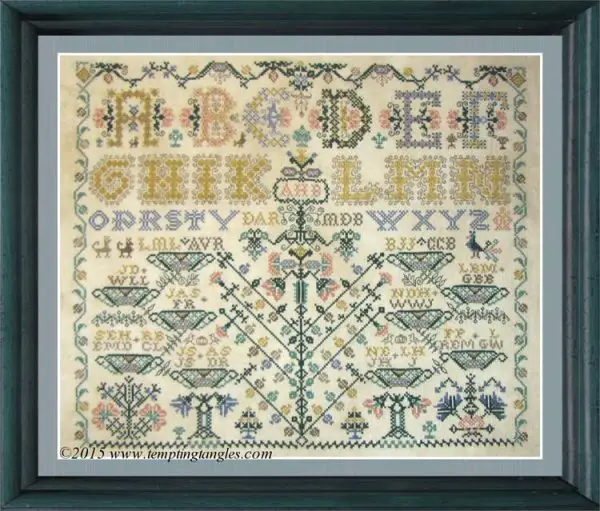
It is from Tempting Tangles Designs and uses Kreinik Silk Mori on linen.
Stitch & Texture
Silk is stronger and shinier than cotton or wool floss, so it gives you the perfect opportunity to show off stitches, either in quilts, embroidery, samplers or needlepoint.
It comes in two forms: spun silk with a softer texture, or filament silk that is very shiny. You can use either kind alone or combined for even more visual interest (imagine a shiny fiber next to a matte fiber). They can be combined with any other type of fiber as well, so you don’t have to stick to an all-silk project if you’re so inclined.
Silk and metallic threads together are just as gorgeous, for instance, as silk threads on silk fabric. It’s okay and actually fun to combine textures; it makes your project more visually interesting.
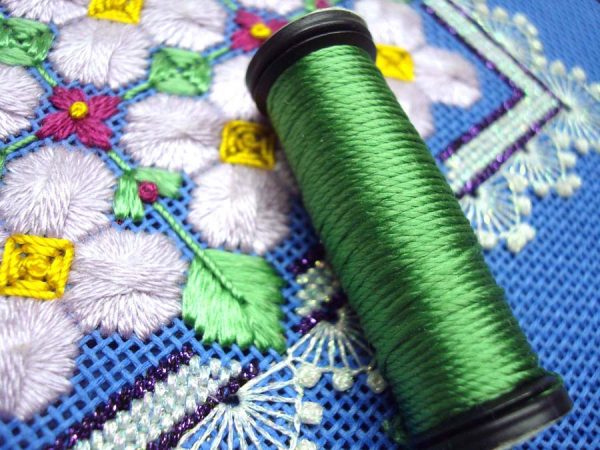
To make the leaves, the Serica is separated, moistened with a slightly damp cosmetic sponge to remove the waves, and laid as a flat silk (for optimum sheen).
Creating Special Heirloom Projects
Since silk does cost more than discount floss, why not use it for those special projects. People will intrinsically know that you’ve made something extra special when they see the shine of the stitches and that makes for a truly wonderful gift.
Are you stitching a wedding gift, Christmas ornament, holiday stocking, or any other design meant to be cherished for a long time to come? Consider silk.
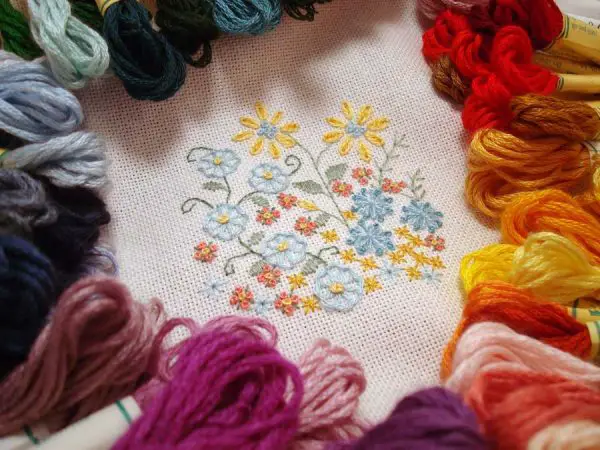
This unique natural fiber is so soft that it will spoil your fingers, while your eyes will love the rich color and vibrant texture. It is truly part of a fiber artist’s basic thread palette, but accessible to stitchers of all levels. Look at your next project and see if silk thread would make your design better, even more beautiful and meaningful.
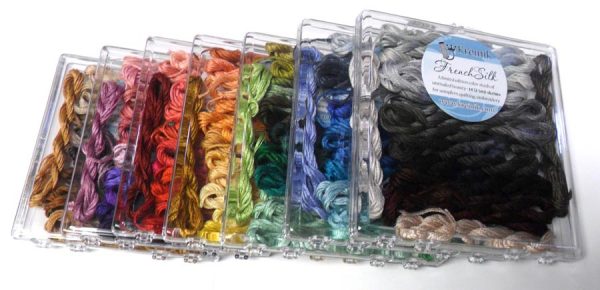
Related Questions:
How Is Silk Thread Made?
Silk thread is made from the cocoons of silk moths. The moths create the cocoons when transforming from larvae and produce up to a mile of silk filament in the process. This is harvested by soaking the cocoons to soften them and then unwinding the filament to produce the thread. Silk thread is usually made from several strands of filament woven together.
Is Silk Thread More Expensive Than Cotton Thread?
Silk thread is produced in smaller quantities than cotton and for that reason alone it is more expensive. However it is similar in price to an over-dyed cotton thread and not as costly as you might expect.
Is Silk Thread Stronger Than Cotton?
Silk thread is very strong and quite durable; you can even use it in fishing. Cotton thread lacks the elasticity of silk and therefore is weaker, breaking under less tension than silk.
